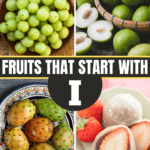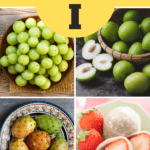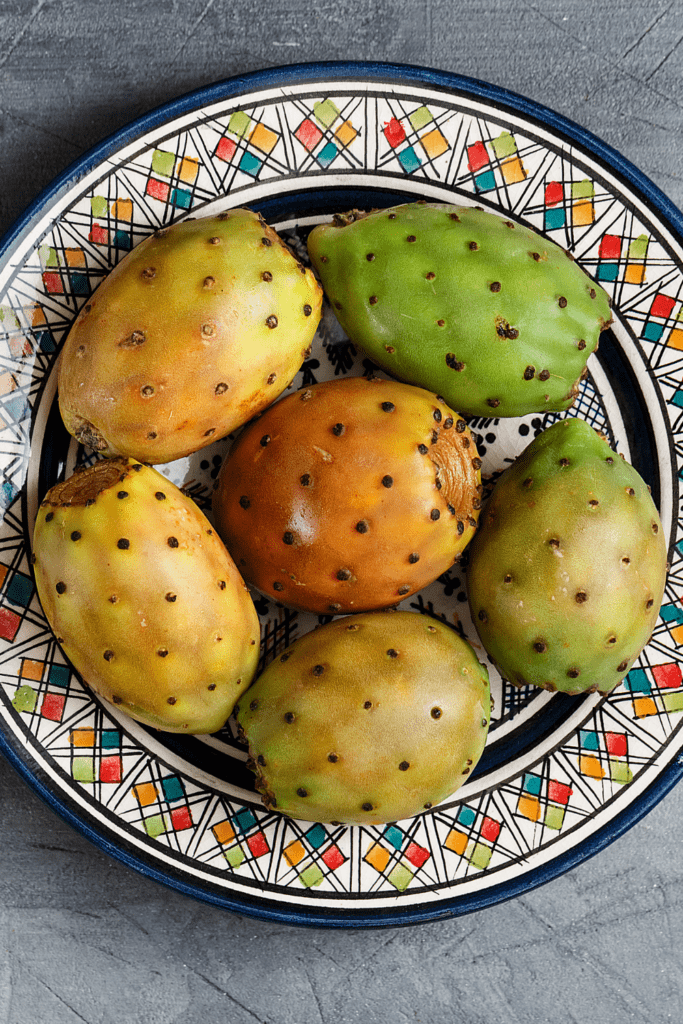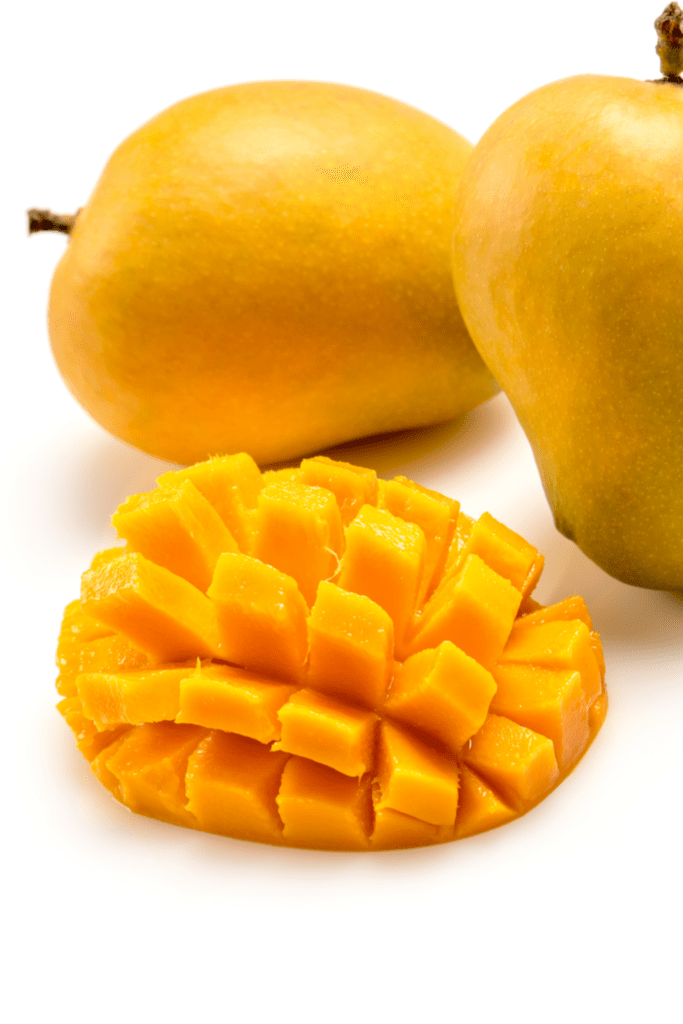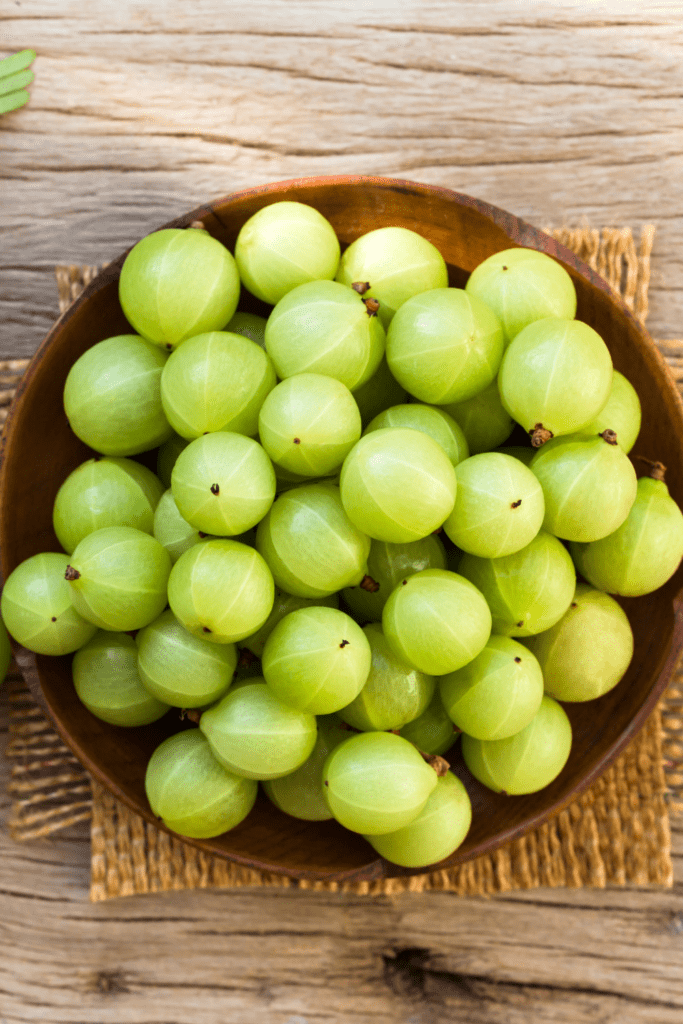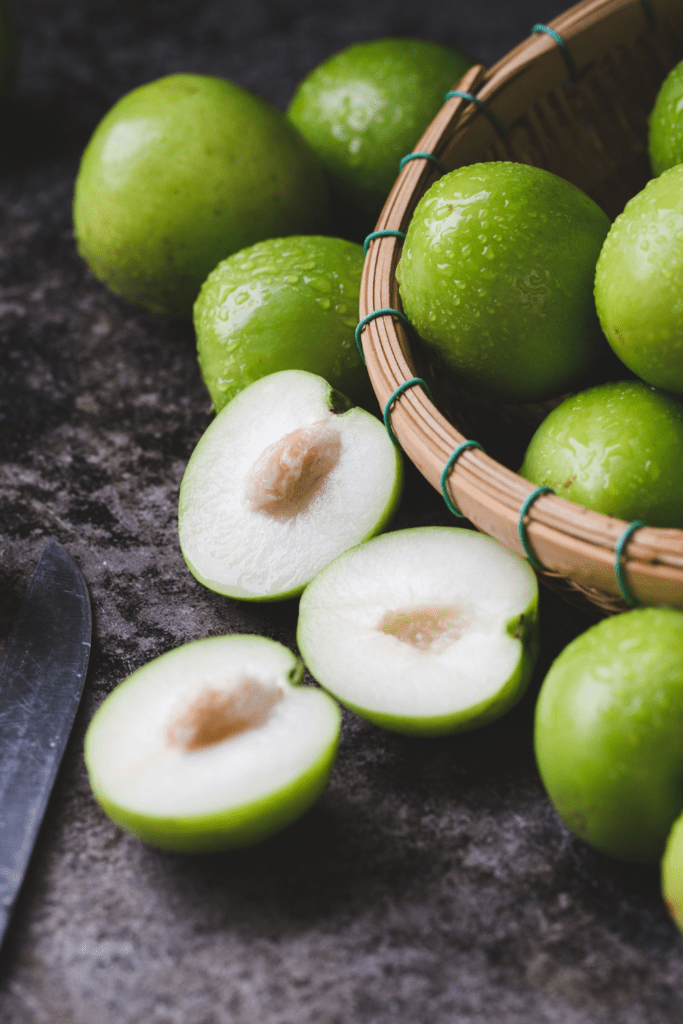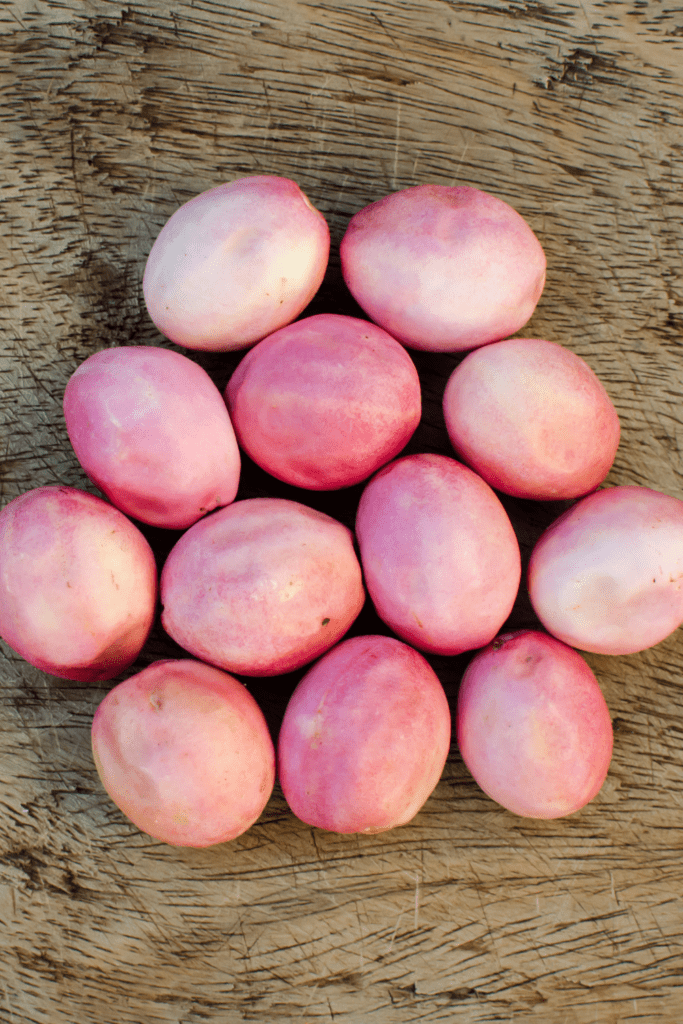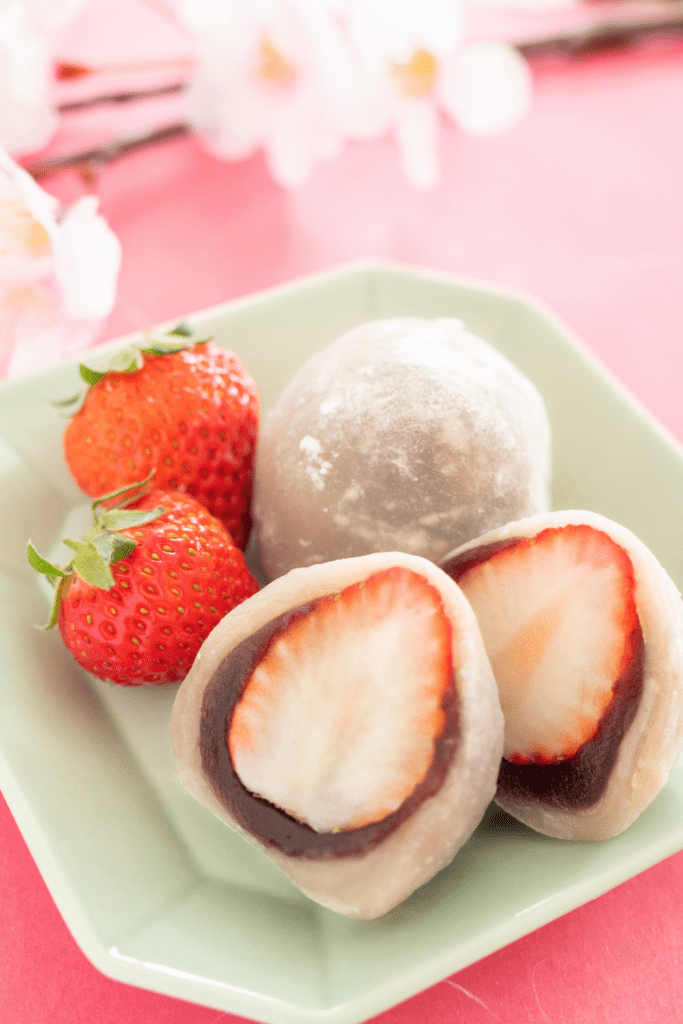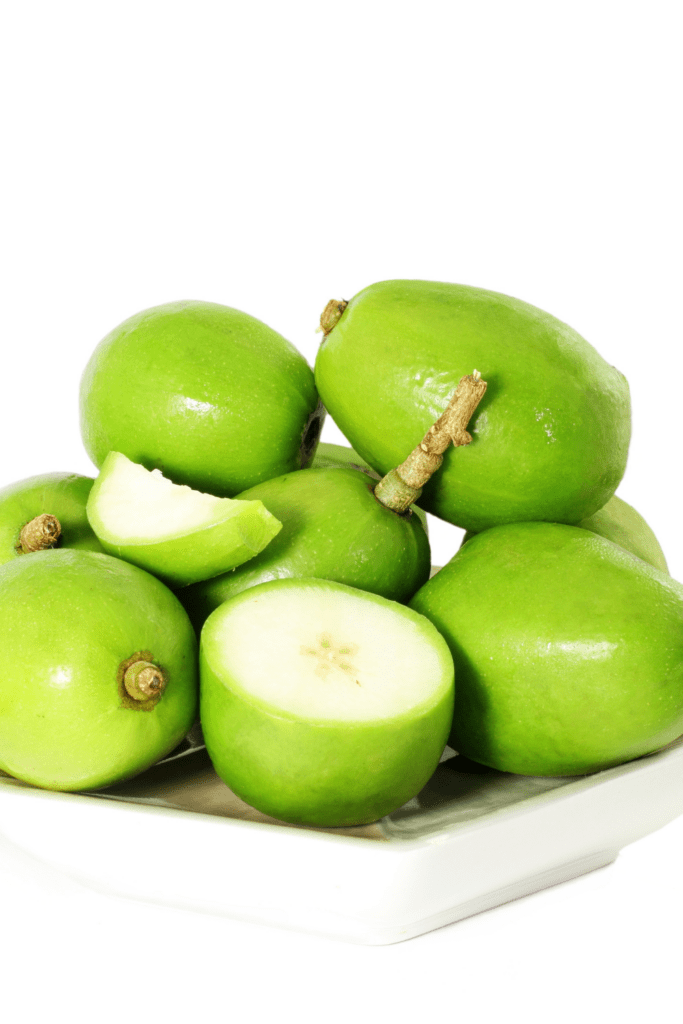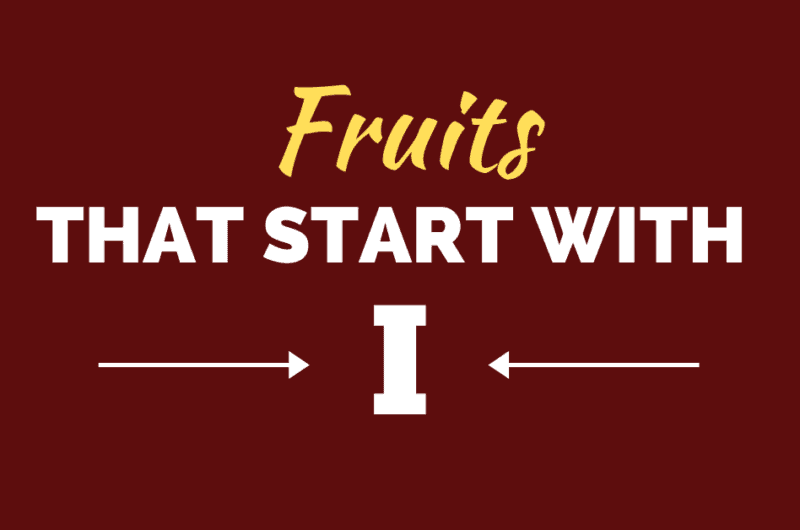When you’re looking for ‘I’ fruits, you have to move into descriptive names like Indian mango, or Indian gooseberry, or Indian fig fruit. Okay, so thank goodness for India; otherwise, this list would’ve been slim! Here are my favorite fruits that start with the letter I. How many of them have you tried?
1. Indian Fig Fruit
Also referred to as the prickly pear, cactus pear, or barbary fig, the Indian fig is an interesting plant. It’s a cactus, and it produces both fruits and veggies. I know; impossible, right? It’s true. The cactus’ fruits come in two colors – dark red and green – and are covered in spiky thorns, hence the name prickly pear. You can peel them, cut them up, and eat them raw, or you can use them to make jam or jelly. They’re a natural source of antioxidants and have a ton of vitamin C. The cactus stems are also edible, and they’re served as a vegetable called nopalitos.
2. Indian Mango
Some people don’t realize that over half the world’s mangoes come from India. The mango is even India’s national fruit. There are several different types of mangoes, but Indian mangoes are greenish-yellow when fully ripe. Their insides are a vibrant, beautiful orange. They’re often used to make mango chutney, which is hugely popular in India, but they also taste excellent raw. They’re more tangy than sweet, and that makes them a popular ingredient in fruit salads and sweet salsas.
3. Ilama Fruit
Ilamas (not to be confused with Llamas) are tropical fruits native to Central America. They’re large and can weigh up to two pounds, and they can be either pink or green, depending on the species. Green ilamas are white on the inside and sweeter than their pink cousins, which are rose-colored on the inside. They’re usually eaten raw.
4. Illawarra Plum
These tiny plums look more like berries and grow in Australia, Wales, and Queensland. They’re a lovely bluish-purple color, and they wear their seeds on the outside, which every fruit should do! You can eat them raw by twisting off the outer seed and popping the remaining fruit in your mouth. They’re sweet and juicy when eaten raw, but they’re also used to make jellies, jams, and an alcoholic beverage with a high alcohol content.
5. Indian Gooseberry
Indian gooseberries are a tasty treat, but they also have a ton of medicinal uses and are reputed to help with intestinal issues, diabetes, cancer, and more. They’re a true superfood. They have more antioxidants than any other known whole food, grow to sizes ranging between large grapes and golf balls, and they even freeze well!
6. Indian Jujube Fruit
This is another Indian fruit with extremely high levels of vitamin C. They’re small, round or oblong fruits that are orangey-red when fully ripe. People eat them both ripe and unripe. Ripe jujube fruit is slightly spongy and has a sweet, flowery taste. Unripe jujube fruit is crisp like an apple and has a somewhat bitter taste that some people enjoy with salt. The fruits can also be pickled, used in alcoholic beverages, or made into jelly, candy, or chutney.
7. Indian Almond Fruit
Indian almond fruit, sometimes called a tropical almond, is both a nut and fruit rolled into one. The nut on the inside of the fruit tastes like a typical almond. However, the outside of the fruit is also edible. As the fruit ripens, several color changes culminate in a purple/red-like color when fully ripe. That’s also when the seed (almond) is edible. If you eat the fruit instead, it’s sweet and juicy and a little bit sticky. There’s also a bit of an acidic aftertaste, but it’s not wholly unpleasant.
8. Ice Apple
Ice apples are strange fruits with many names. They’re grown in many tropical areas across the globe. When ripe, ice apples look a lot like turnip/eggplant hybrids, but they feel more like coconuts. (I told you they were strange!) They’re high in iron, potassium, calcium, antioxidants, and B vitamins. They’re called ice apples because once they’re cut open with the edible parts exposed, they’re clear like ice. The edible portion has a firm jelly-like consistency, and when you bite into it, it releases water into your mouth for a cool, refreshing experience.
9. Icaco
Icacos grow on plants near the sea, and the closer to the sea the plant is, the sweeter the fruit will be. They’re native to Florida and the West Indies, but they now grow in other places, as well, and are considered an invasive species in some of them. Sometimes called cocoplums, the fruits range in color from white to pink to deep purple, and both they and their seeds are edible. The seeds are also regularly ground up and used as a spice.
10. Indian Sherbet Berry
These berries grow in clusters like grapes and are similar in appearance, size, and taste to muscadines. They’re more tart than sweet, and some are even outright sour. They’re easily digested, have tons of vitamin C, and are packed with antioxidants. They also have health benefits. They’re good for joint pain, anemia, and respiratory illnesses.
11. Ichigo
Ichigo translates to ‘strawberry,’ and that’s what ichigo fruits are. They’re a type of light, cherry blossom-pink Japanese strawberry that tastes great and smells even better. They’re high in vitamins A, C, E, and K, as well as calcium, iron, zinc, and magnesium. Aside from their color, they look almost identical to the strawberries we’re used to eating.
12. Indian Hog Plum
Sometimes referred to as a condiment fruit, Indian hog plum is often used to make curry, chutney, and other spicy Indian condiments. It’s also frequently pickled with a variety of spices for flavor. The fruit is edible raw, but it’s hard to separate the stone from the pulp, so it’s more often used in the recipes mentioned above. Fun fact: The leaves of the hog plum tree are also edible and commonly used as antiseptic. People even use the tree’s bark for medicine. Click on a star to rate it!
Average rating 3.7 / 5. Vote count: 10 No votes so far! Be the first to rate this post.
Share on social media: Let us improve this post!
